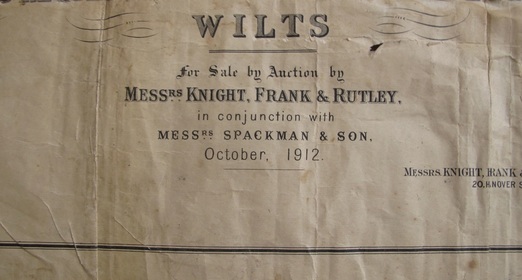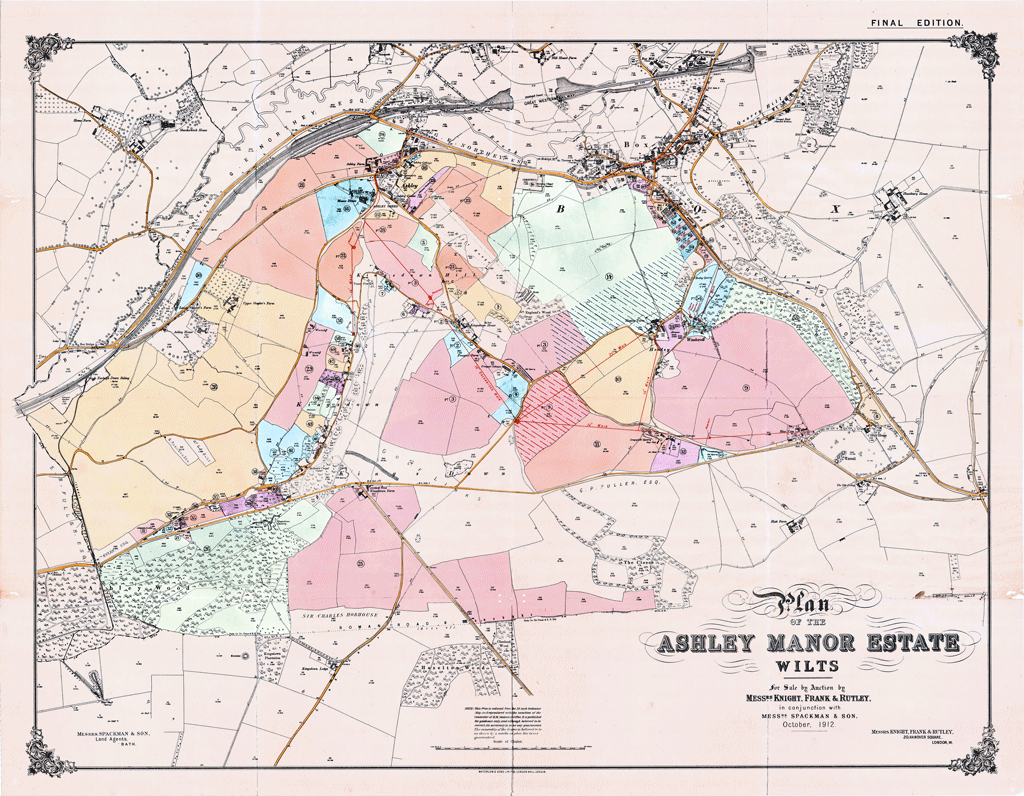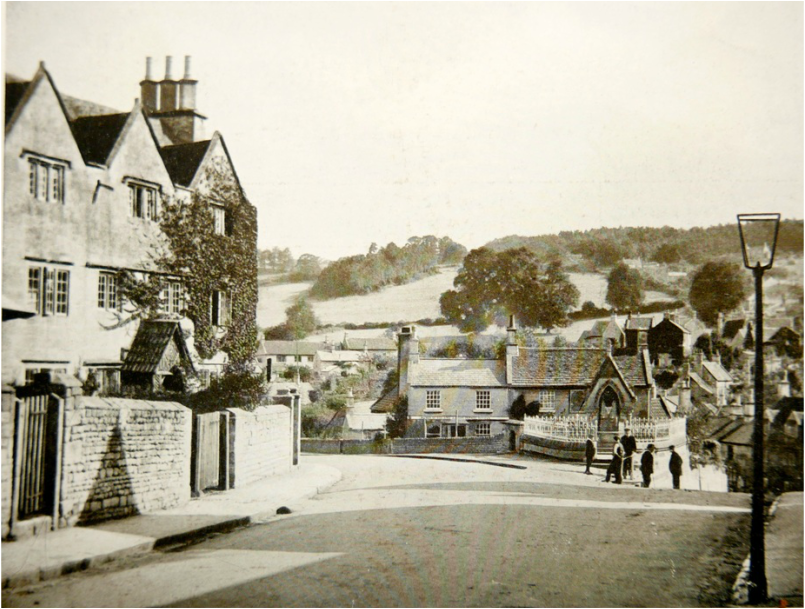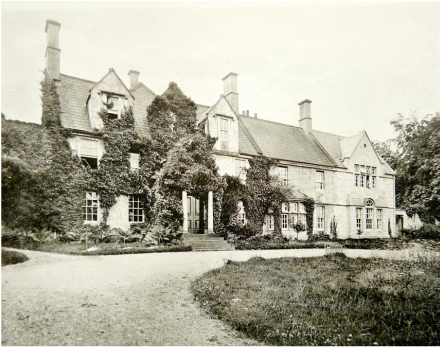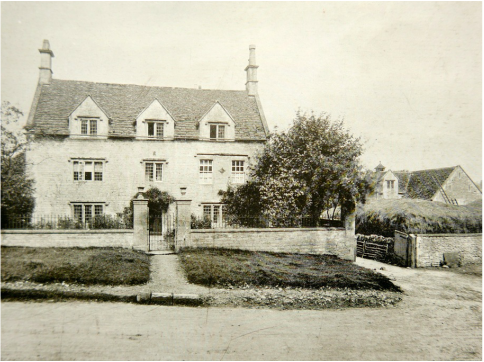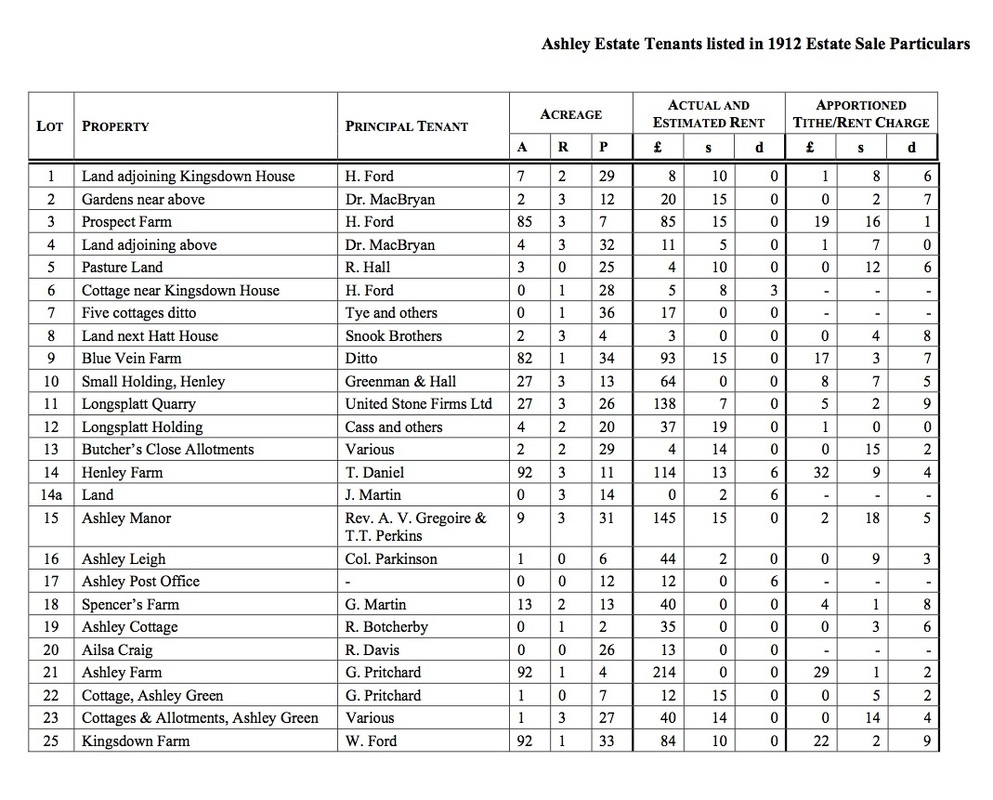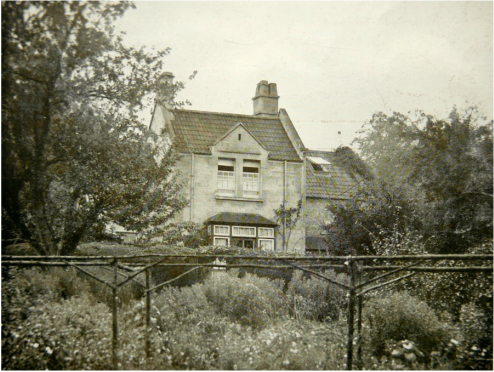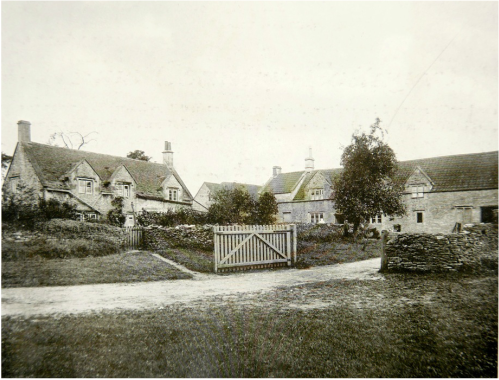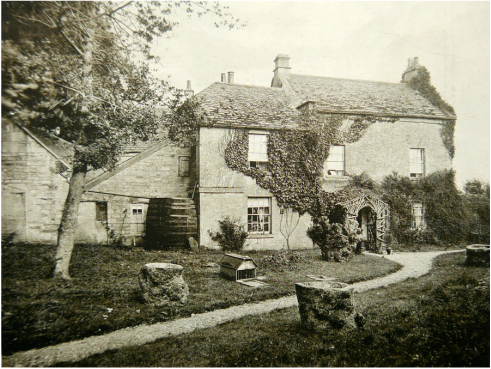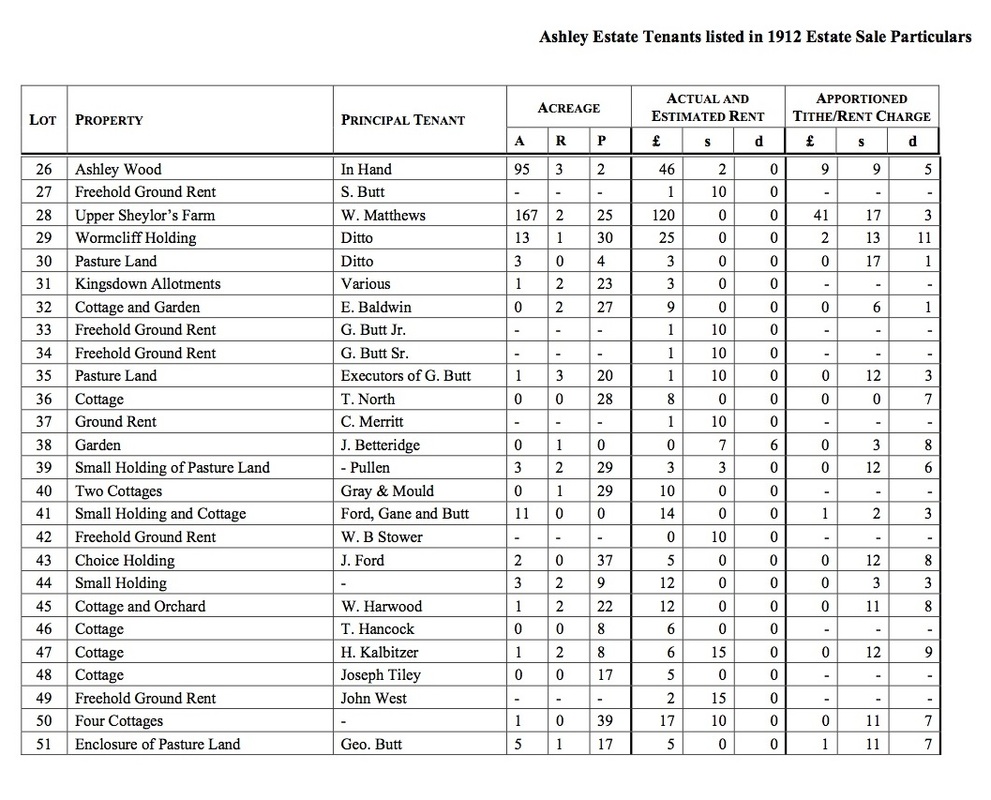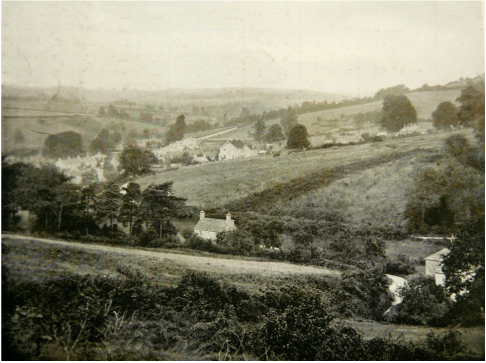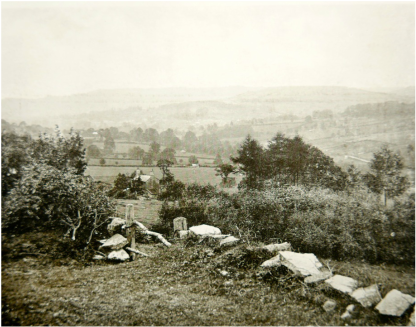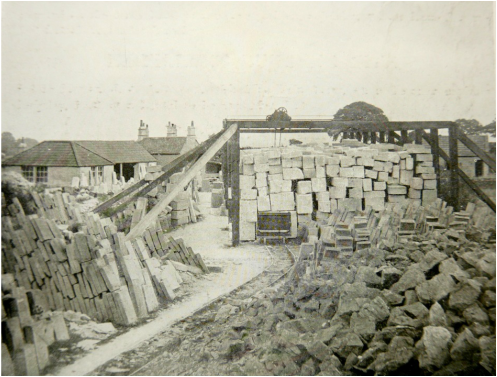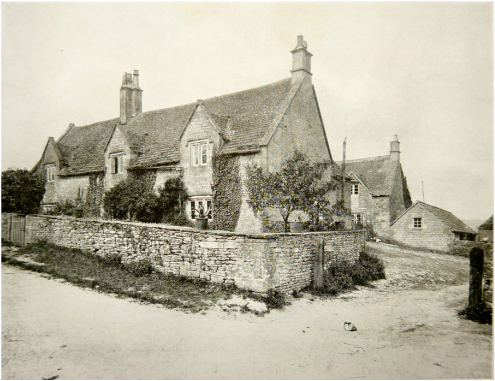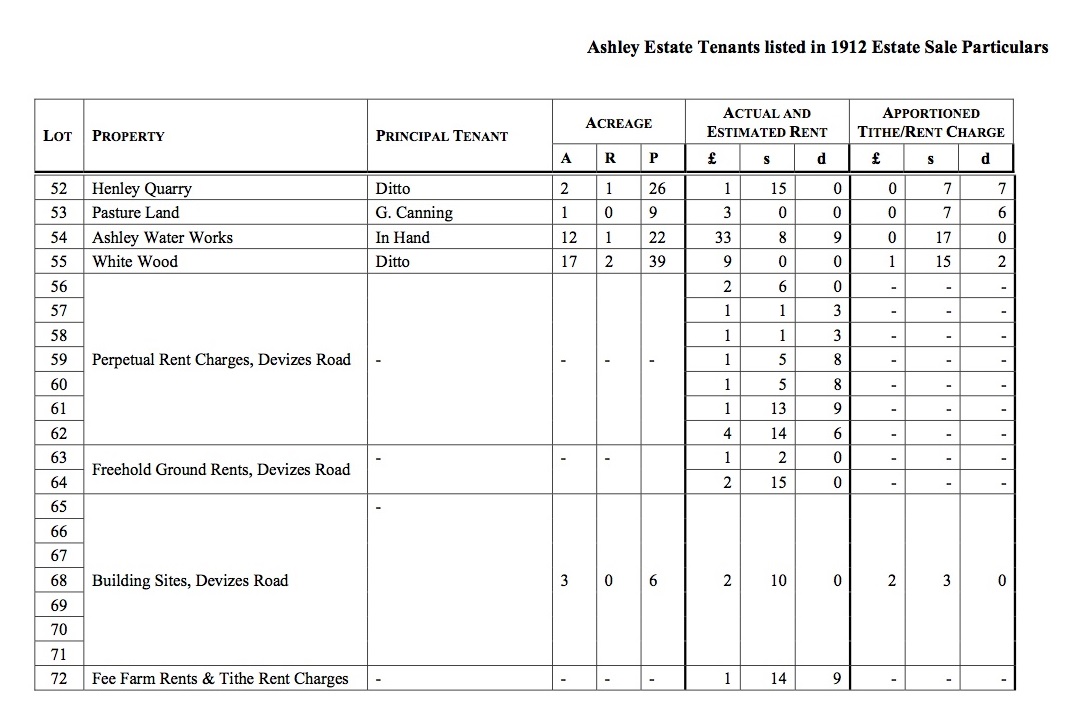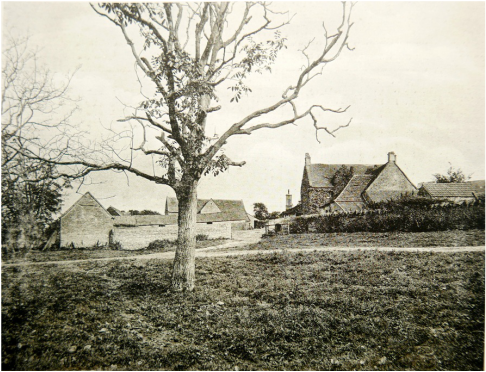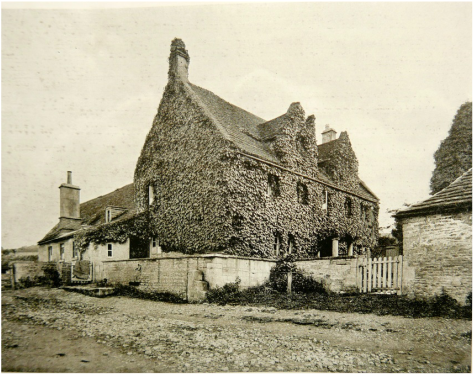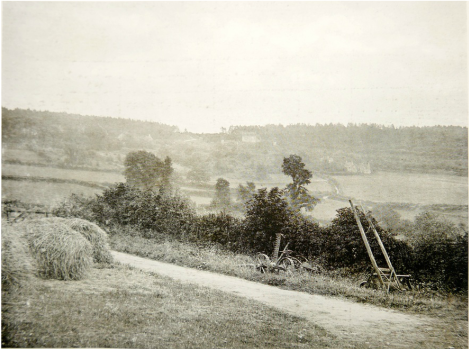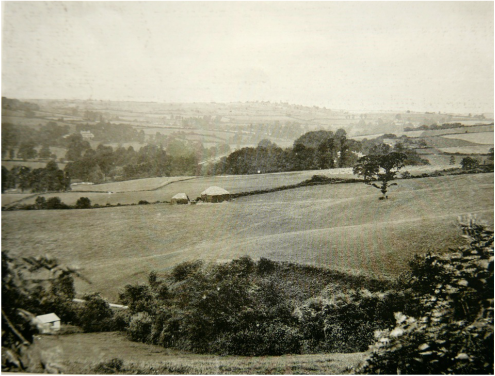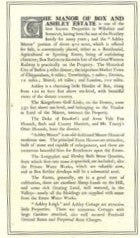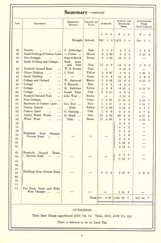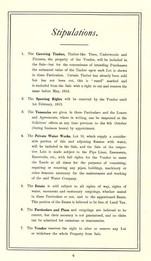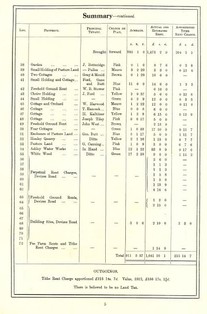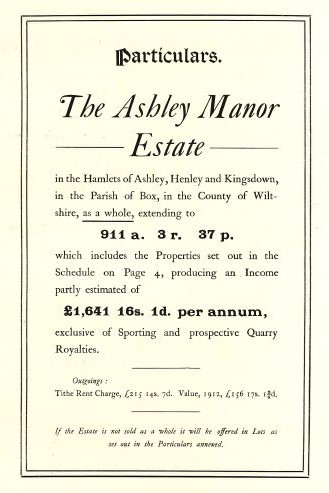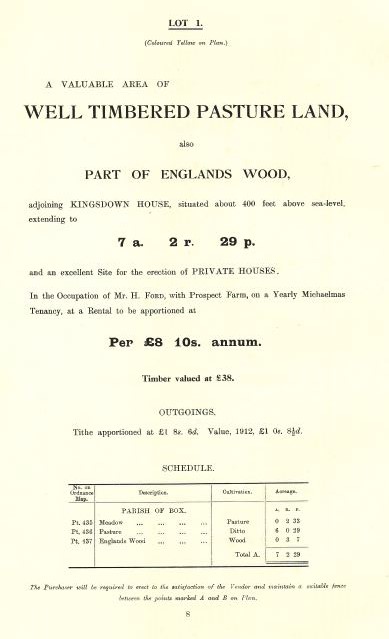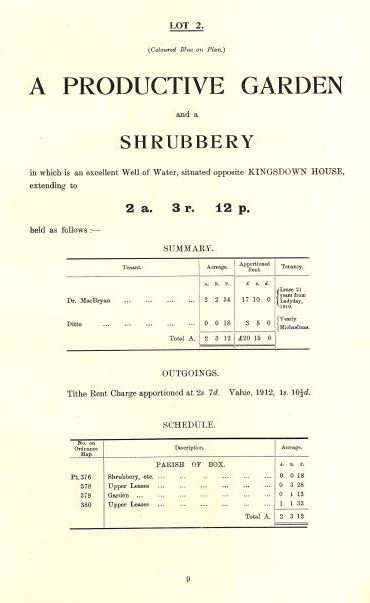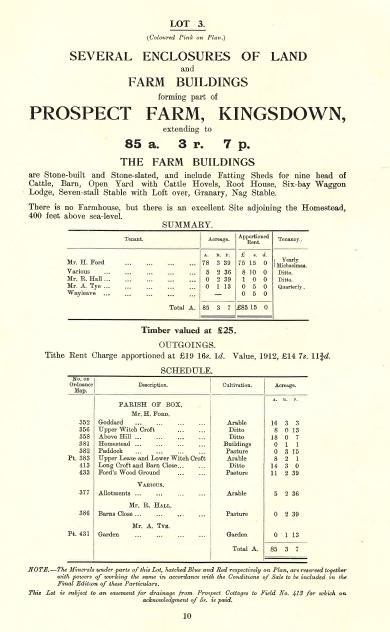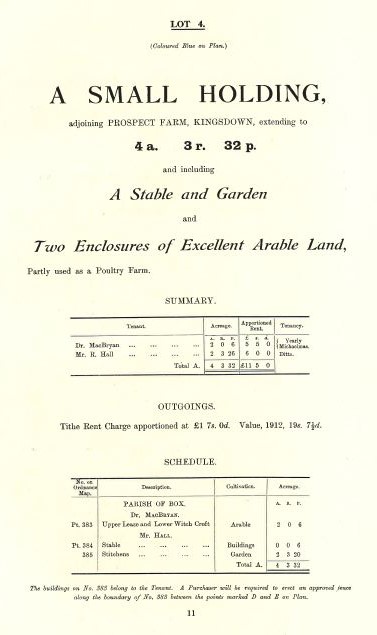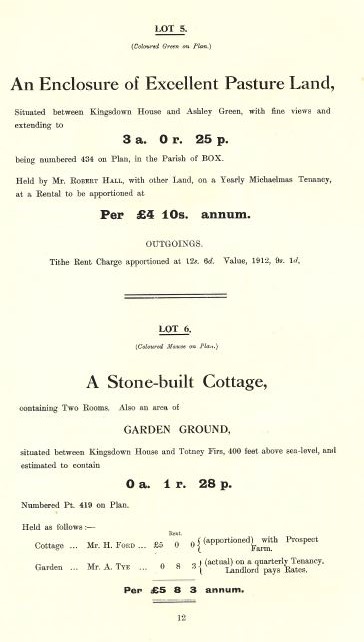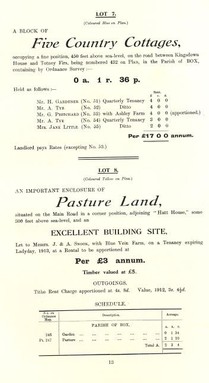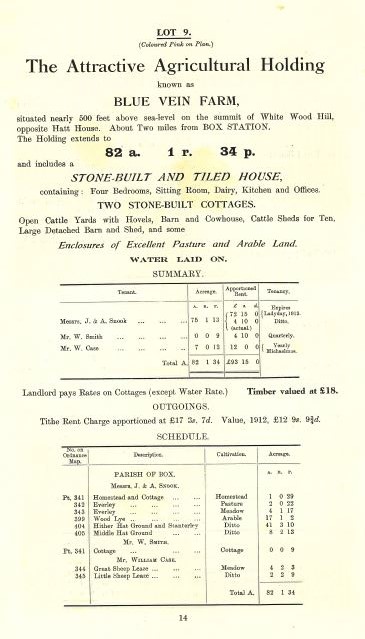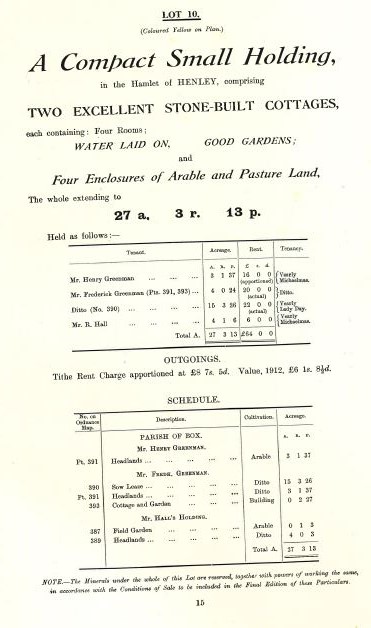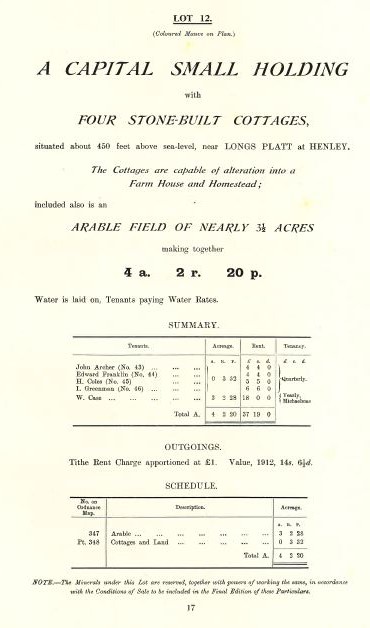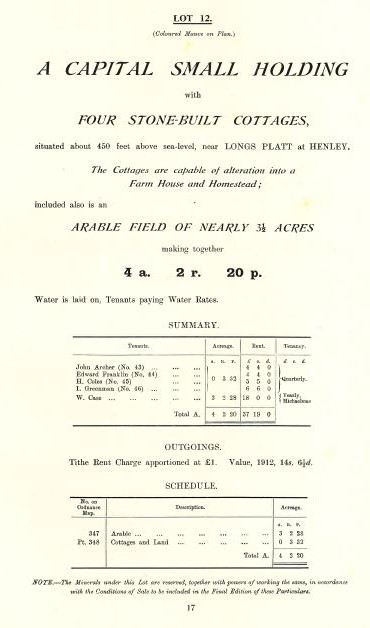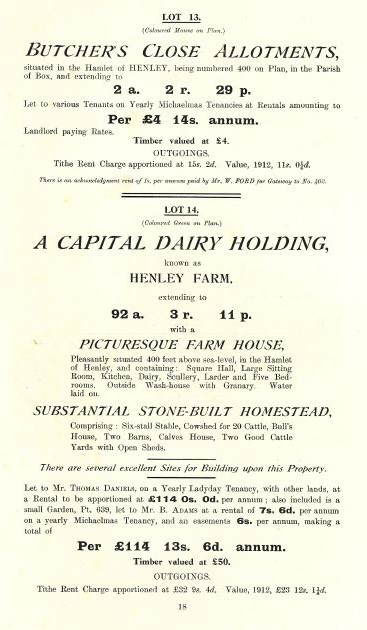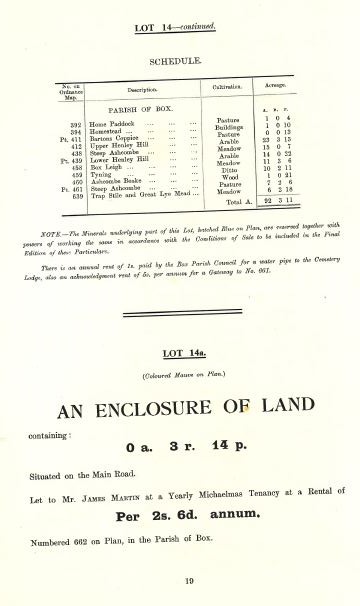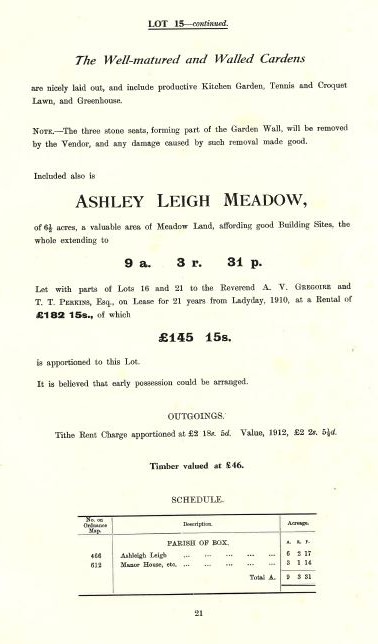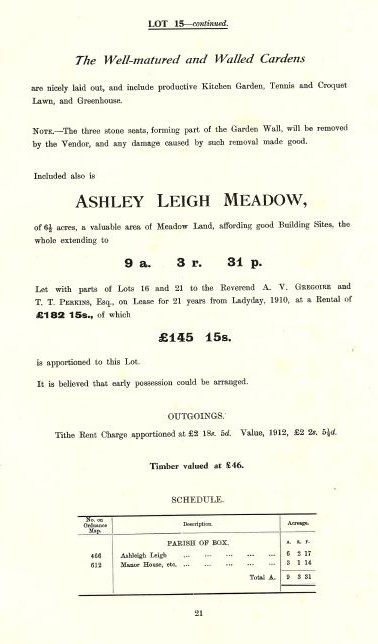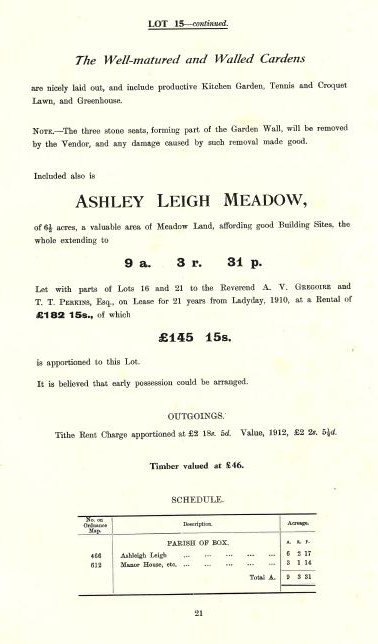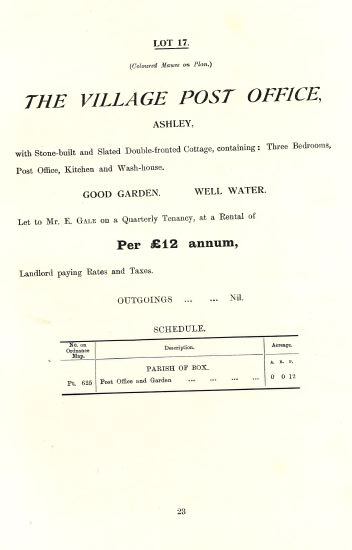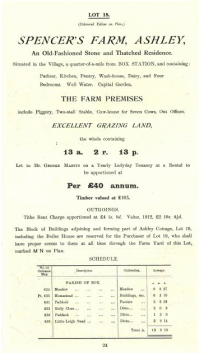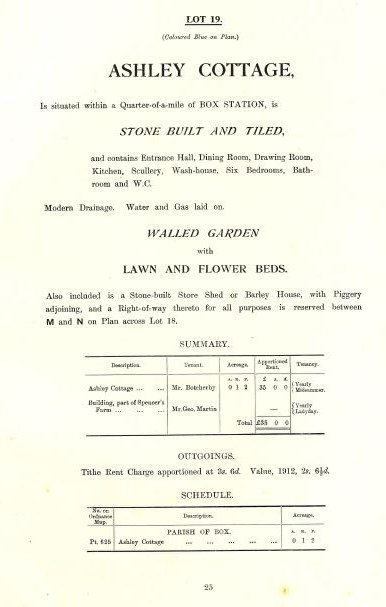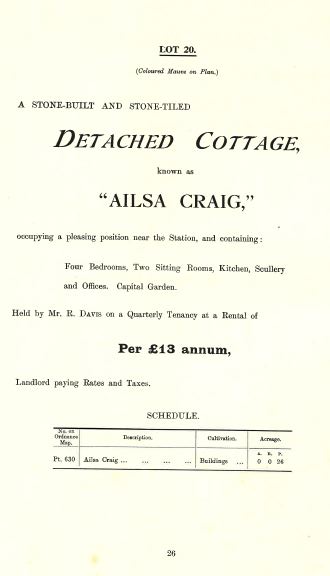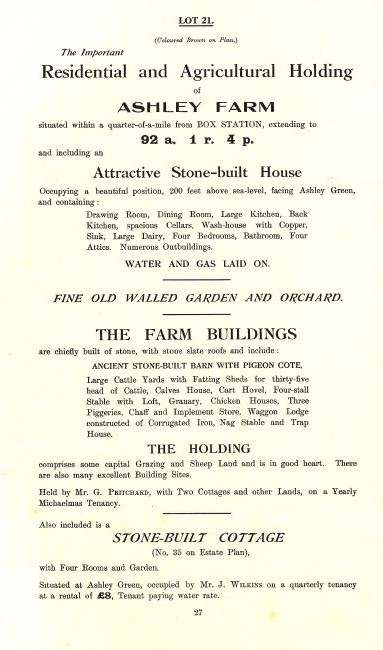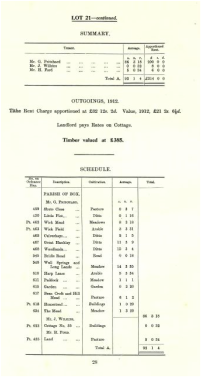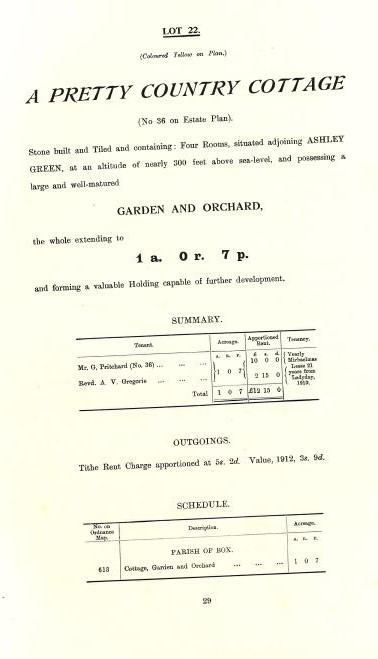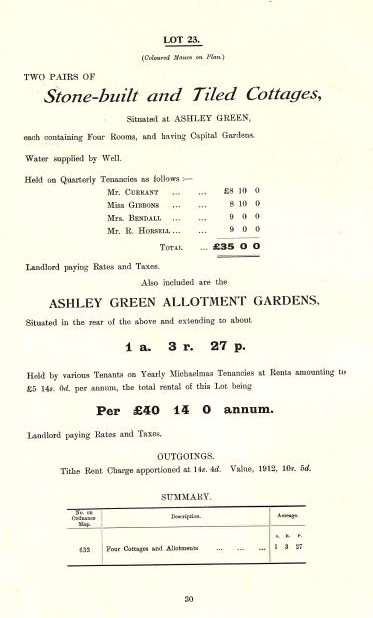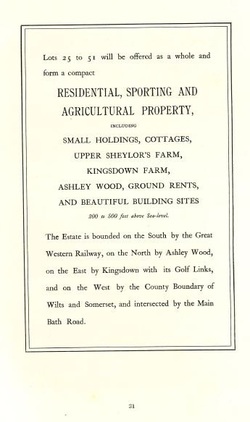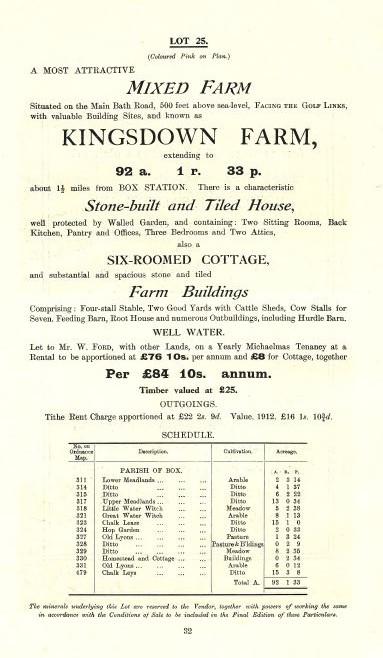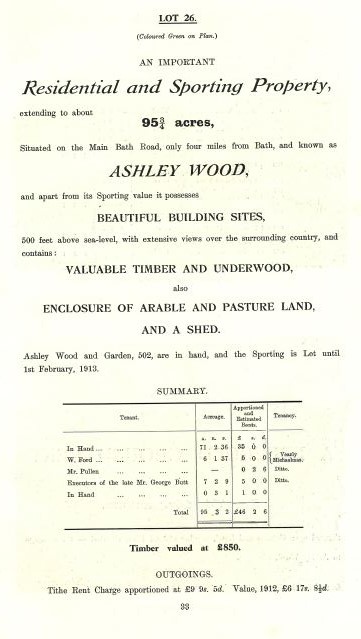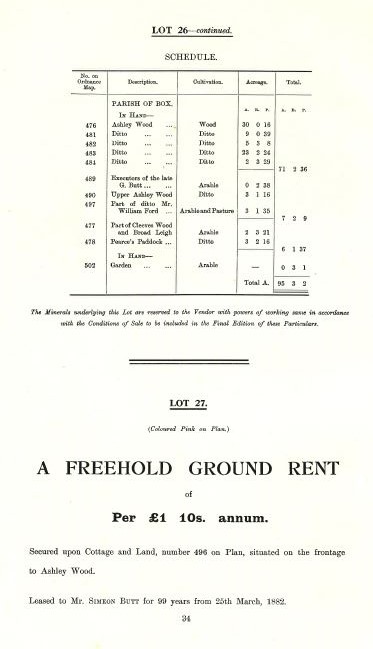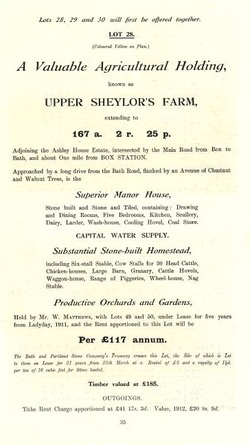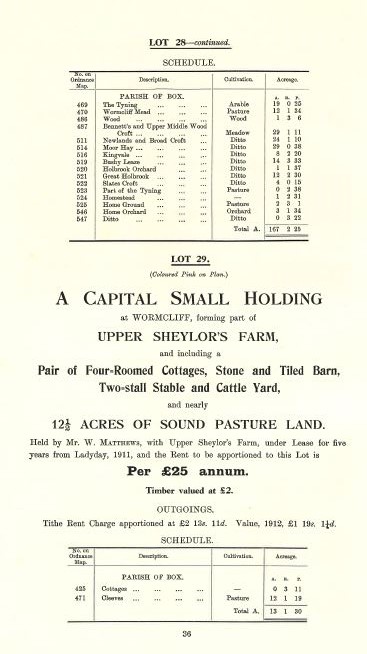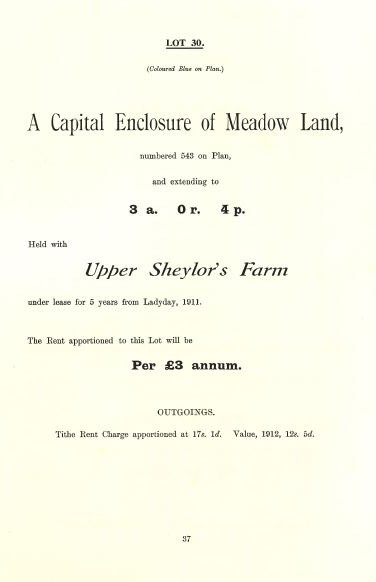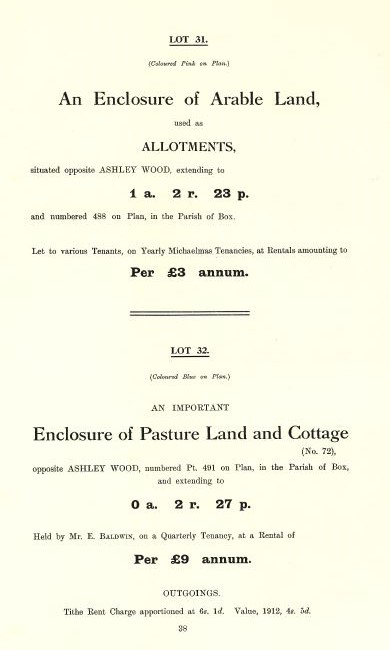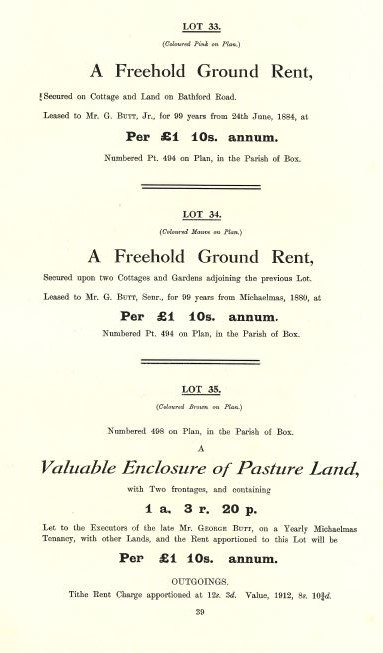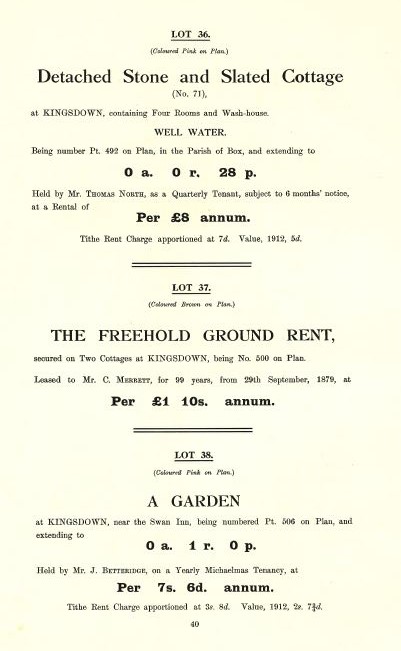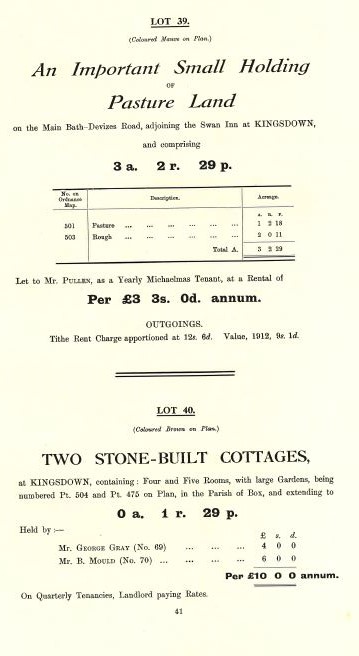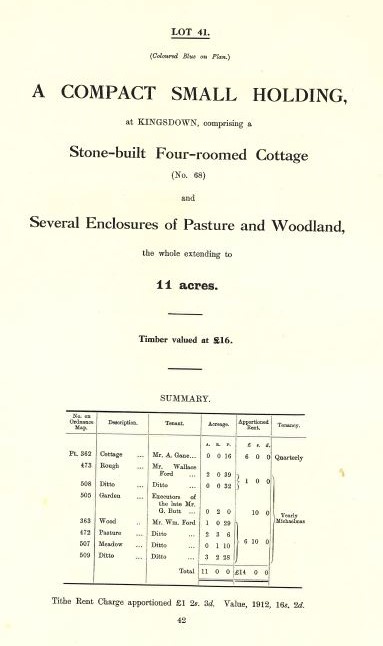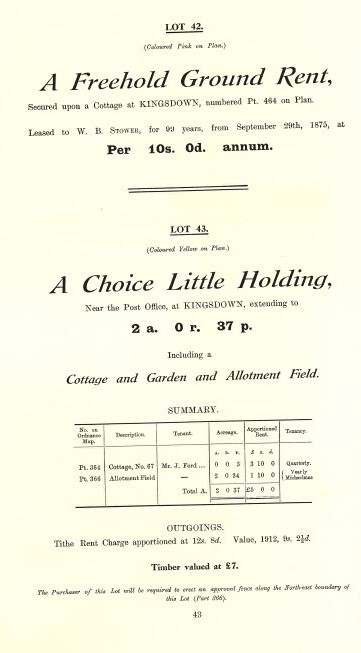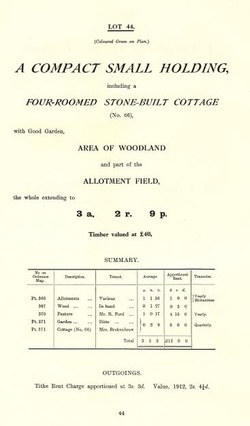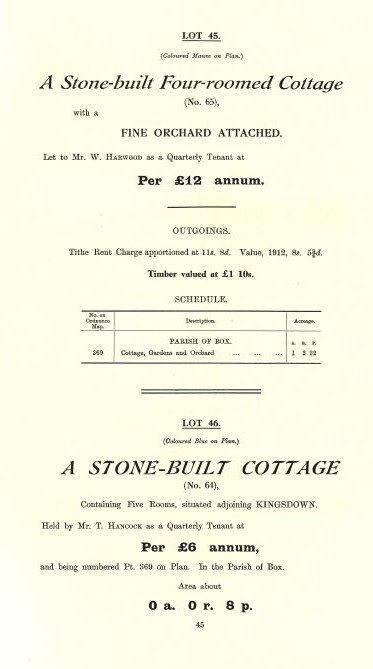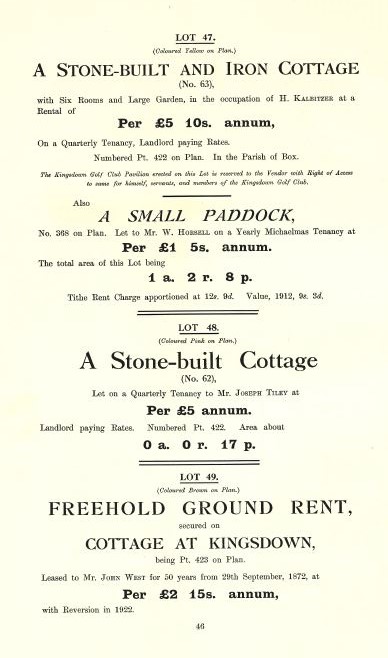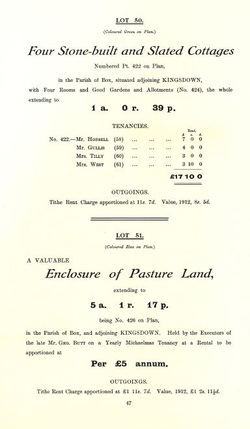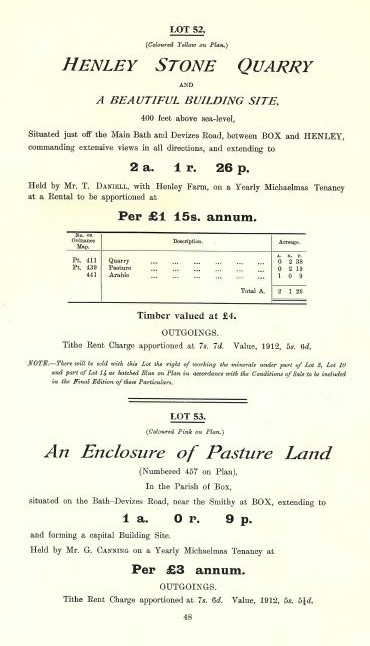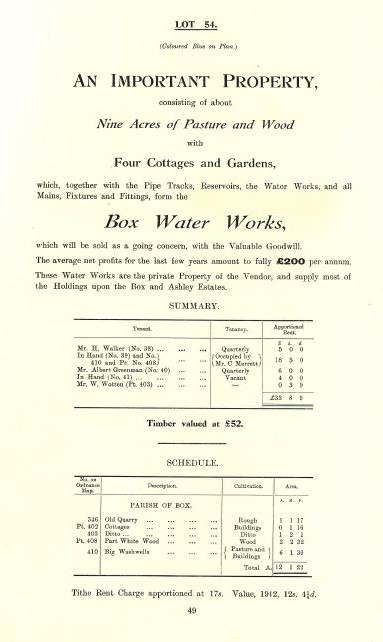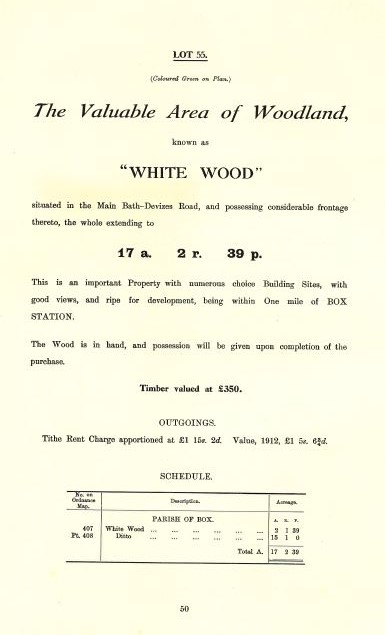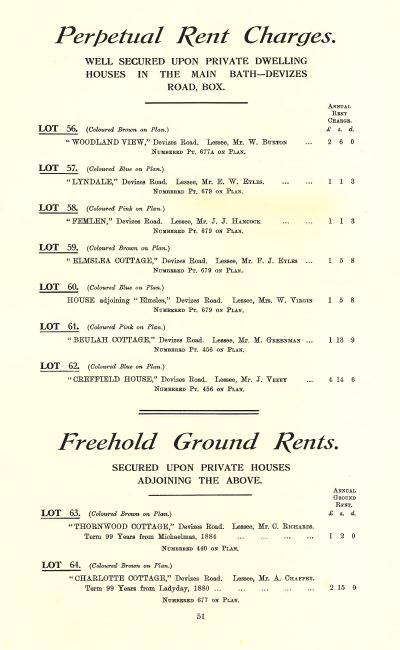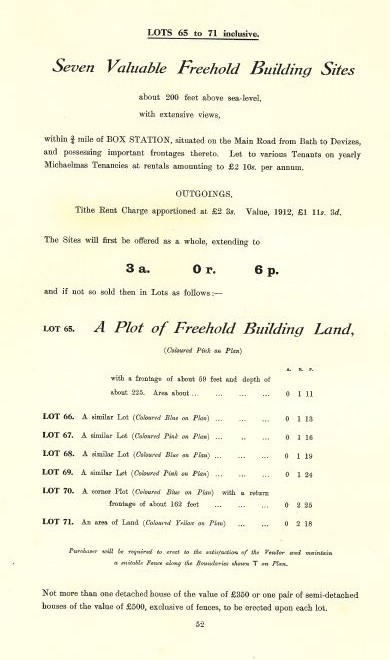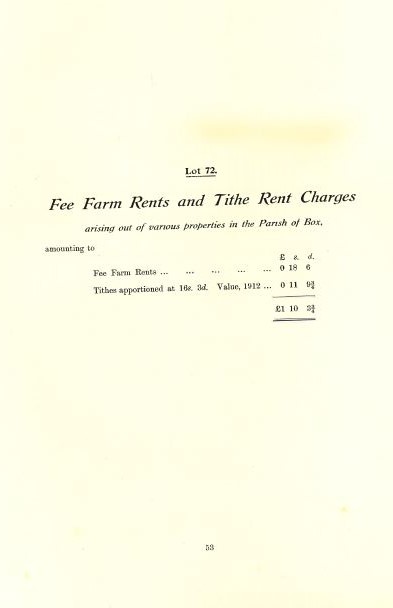These days most of us own our own home or we aspire to do so. Our national economy is geared up to advancing mortgages for people to buy a house. It wasn't so in Box before the early twentieth century or, to be precise, before 1912.
That was the year that a huge amount of land was put up for sale by the Northey family, the lords of Box manor. It was turning point in the village's story; the moment when development rights were opened up to middle class residents. This article explores why the Northeys wanted to sell up and the effect it had on the village.
That was the year that a huge amount of land was put up for sale by the Northey family, the lords of Box manor. It was turning point in the village's story; the moment when development rights were opened up to middle class residents. This article explores why the Northeys wanted to sell up and the effect it had on the village.
Position of Landowners
It used to be thought that the decline of the land-owning classes was due to a loss of political influence with the rise of the middle classes and a reduction in economic control with rental incomes hit by the impact of free trade. Deflation in the years after 1873 meant cheaper prices for landlords and it was claimed that their end came with financial pressure caused by an extension of inheritance tax by the Liberal government of 1909 and the death of heirs in the First World War. However, as we shall see, the analysis of inheritance tax and World War 1 does not seem correct in Box.
It used to be thought that the decline of the land-owning classes was due to a loss of political influence with the rise of the middle classes and a reduction in economic control with rental incomes hit by the impact of free trade. Deflation in the years after 1873 meant cheaper prices for landlords and it was claimed that their end came with financial pressure caused by an extension of inheritance tax by the Liberal government of 1909 and the death of heirs in the First World War. However, as we shall see, the analysis of inheritance tax and World War 1 does not seem correct in Box.
The historian FML Thompson put forward a different theory that the decline started much earlier and was due to much wider social shifts.[1] He cited triggers of landlord decline before 1880, including factors such as the opening of employment in public service to professional people.[2] He believed that it was the agricultural depression after 1870 which made it increasingly unviable for landlords to hold on to large landed estates. And local power and influence was further reduced with the County Councils Act of 1888 (the dethronement of the squirearchy) and the establishment of parish council after 1893. FML Thompson's concept of the decline of the land-owning class does fit with events in Box.
Decline of the Northeys in Box
In 1873 the Rev Edward W Northey held 1,300 acres of land in the parish but by 1894 this had reduced by half.[3] It was a huge reduction to try to limit the cost of estate management and the capital investment needed to improve properties. It was an impossible situation and increasingly unsustainable to invest into the land assets when the depression of farming profitability made any increase in farm rents ever more difficult.[4]
English wheat prices reduced from an average of 56 shillings per quarter in 1867 to 27 shillings in 1894.[5] There was also a fall in the profitability of wool and meat-breeding. We can see at Ashley how farms were given up by tenants and the and allowed to became weeded and let go to waste.[6] Whilst dairy farming suffered less than arable, the size of local farms meant that local dairies were merely small-holdings with a few cows. These farms survived only when the farmer committed massive personal labour.
The family also suffered personal change. The patriarch George Wilbraham Northey of Ashley Manor died in 1906, aged 71 years.[7] The years around the turn of the century saw the sale of several local large estates. Walter Long put most of his Wiltshire farms for sale in 1910 saying, those of us who do not possess other sources of income must regulate our affairs accordingly.[8]
The Ashley and Box manors (the seat of the Northey family for many years) were put up for sale in 1912 by the agents Knight, Frank and Rutley. They comprised 900 acres, almost the entire local Northey holdings.[9] The auction was advertised in the local press but not much more as it was a small sale for the agents, who in 1918 sold nearly half a million acres in a single year.[10]
In 1873 the Rev Edward W Northey held 1,300 acres of land in the parish but by 1894 this had reduced by half.[3] It was a huge reduction to try to limit the cost of estate management and the capital investment needed to improve properties. It was an impossible situation and increasingly unsustainable to invest into the land assets when the depression of farming profitability made any increase in farm rents ever more difficult.[4]
English wheat prices reduced from an average of 56 shillings per quarter in 1867 to 27 shillings in 1894.[5] There was also a fall in the profitability of wool and meat-breeding. We can see at Ashley how farms were given up by tenants and the and allowed to became weeded and let go to waste.[6] Whilst dairy farming suffered less than arable, the size of local farms meant that local dairies were merely small-holdings with a few cows. These farms survived only when the farmer committed massive personal labour.
The family also suffered personal change. The patriarch George Wilbraham Northey of Ashley Manor died in 1906, aged 71 years.[7] The years around the turn of the century saw the sale of several local large estates. Walter Long put most of his Wiltshire farms for sale in 1910 saying, those of us who do not possess other sources of income must regulate our affairs accordingly.[8]
The Ashley and Box manors (the seat of the Northey family for many years) were put up for sale in 1912 by the agents Knight, Frank and Rutley. They comprised 900 acres, almost the entire local Northey holdings.[9] The auction was advertised in the local press but not much more as it was a small sale for the agents, who in 1918 sold nearly half a million acres in a single year.[10]
Sale Particulars, 1912
The sale particulars give an interesting view of the extent of the Northey estate at that time. The list included individual farms and cottages, quarry land operated by the Bath Stone Quarry including those at Longsplatt and Henley, and private water works. Some of it was not income-bearing, including land adjoining Box Station, Kingsdown Golf Course, common land and wasteland.
The sale particulars give an interesting view of the extent of the Northey estate at that time. The list included individual farms and cottages, quarry land operated by the Bath Stone Quarry including those at Longsplatt and Henley, and private water works. Some of it was not income-bearing, including land adjoining Box Station, Kingsdown Golf Course, common land and wasteland.
It seemed an appropriate time to sell as the Smallholdings Act of 1907 gave help to small farmers particularly in dairy. But many of the Box farms had been let to sitting tenants at low rents for extended time periods.[11] They were also very run down and in need of considerable capital investment.
No private landlord wanted to buy the entire estate (possibly fearful of government taxation policies) and insufficient sitting tenants were able to purchase their holdings. The auction was a failure and the properties taken off the market.
No private landlord wanted to buy the entire estate (possibly fearful of government taxation policies) and insufficient sitting tenants were able to purchase their holdings. The auction was a failure and the properties taken off the market.
Sales of 1919 - 1923
The Northey situation suffered further during the First World War. George Edward Wilbraham Northey already owed death duties from 1906 when his father George Wilbraham Northey had died. In 1914 Anson Northey, the eldest son and heir of George Edward Wilbraham Northey was reported missing (and eventually found to have died) in Flanders in the first days of the conflict in 1914 and the next son was a minor.[12]
High value items in the Northey estate were sold in 1919. Within a short period, farming tenants were given notice to quit and in February 1920 the Chippenham livestock agents, Tilley, Culverwell and Parrott, gave advance notice of the sale of the entire live and dead stock of Henley and Ashley Farms, the farms having been sold.[13] In 1919 George Jardine Kidston, bought Hazelbury Manor, which had fallen into decline.
The Northey situation suffered further during the First World War. George Edward Wilbraham Northey already owed death duties from 1906 when his father George Wilbraham Northey had died. In 1914 Anson Northey, the eldest son and heir of George Edward Wilbraham Northey was reported missing (and eventually found to have died) in Flanders in the first days of the conflict in 1914 and the next son was a minor.[12]
High value items in the Northey estate were sold in 1919. Within a short period, farming tenants were given notice to quit and in February 1920 the Chippenham livestock agents, Tilley, Culverwell and Parrott, gave advance notice of the sale of the entire live and dead stock of Henley and Ashley Farms, the farms having been sold.[13] In 1919 George Jardine Kidston, bought Hazelbury Manor, which had fallen into decline.
There were more sales organised for the Northey land and various agents used. But there were no buyers in the years after the end of the Great war. The map above was for the auction of 1923 by Rawlence and Squarey, land agents for Wiltshire, Dorset and Hampshire (later became Humberts in Chippenham). Not all of the estate was sold at this time; Hill House Farm was sold in 1948 and Slades Farm was sold only in 1964.[14]
The sale of the Northey estates marked the end of landlord control of the village, the conclusion of a period that had lasted since medieval times. It was also the opening of a new chapter in Box’s story. When a paddock off the A4 was sold in the early 1920s,
it was bought by the Lambert family who held it until they built Moonrakers there in 1953.[15] Middle class residents took over the land and property in Box and the in-fill development that has gone on since. It really was the end of an era of the lords of Box manor.
The sale of the Northey estates marked the end of landlord control of the village, the conclusion of a period that had lasted since medieval times. It was also the opening of a new chapter in Box’s story. When a paddock off the A4 was sold in the early 1920s,
it was bought by the Lambert family who held it until they built Moonrakers there in 1953.[15] Middle class residents took over the land and property in Box and the in-fill development that has gone on since. It really was the end of an era of the lords of Box manor.
Appendix
Sale Brochure 1912
We reproduce below the 1912 Sale Catalogue (courtesy Wiltshire & Swindon History Centre). This appears to be an initial version which was later amended and has some alterations to the final version published in the extracts above. Double click on pictures to enlarge details of individual farms and cottages.
Introduction
Sale Brochure 1912
We reproduce below the 1912 Sale Catalogue (courtesy Wiltshire & Swindon History Centre). This appears to be an initial version which was later amended and has some alterations to the final version published in the extracts above. Double click on pictures to enlarge details of individual farms and cottages.
Introduction
Lots for Sale (larger image by clicking on thumbnail)
References
[1] FML Thompson, English Landed Society in the Nineteenth Century, 1963, Routledge & Kegan Paul
[2] Reforms by the first Gladstone administration after 1868 included the abolition of the purchase of army commissions; and the growth of county police forces which reduced the influence of the gentry class as Justices of the Peace.
[3] Victoria County History of Wiltshire, Vol IV, p.106
[4] See Farming Depression
[5] FML Thompson, English Landed Society in the Nineteenth Century, p.308
[6] See Ashley Lane
[7] The Bath Chronicle, 22 March 1906 has details of the procession from Ashley Manor
[8] FML Thompson, English Landed Society in the Nineteenth Century, p.322
[9] Wiltshire & Swindon History Centre, Northey Sale Particulars
[10] FML Thompson, English Landed Society in the Nineteenth Century, p.329
[11] Christopher Hibbert, The English: A Social History 1066-1945, 1987, Harper Collins, p.565-6
[12] See In Memoriam
[13] The Western Gazette, 13 February 1920
[14] Countryside Treasures, Wiltshire History Centre
[15] Courtesy Margaret Wakefield
[1] FML Thompson, English Landed Society in the Nineteenth Century, 1963, Routledge & Kegan Paul
[2] Reforms by the first Gladstone administration after 1868 included the abolition of the purchase of army commissions; and the growth of county police forces which reduced the influence of the gentry class as Justices of the Peace.
[3] Victoria County History of Wiltshire, Vol IV, p.106
[4] See Farming Depression
[5] FML Thompson, English Landed Society in the Nineteenth Century, p.308
[6] See Ashley Lane
[7] The Bath Chronicle, 22 March 1906 has details of the procession from Ashley Manor
[8] FML Thompson, English Landed Society in the Nineteenth Century, p.322
[9] Wiltshire & Swindon History Centre, Northey Sale Particulars
[10] FML Thompson, English Landed Society in the Nineteenth Century, p.329
[11] Christopher Hibbert, The English: A Social History 1066-1945, 1987, Harper Collins, p.565-6
[12] See In Memoriam
[13] The Western Gazette, 13 February 1920
[14] Countryside Treasures, Wiltshire History Centre
[15] Courtesy Margaret Wakefield
